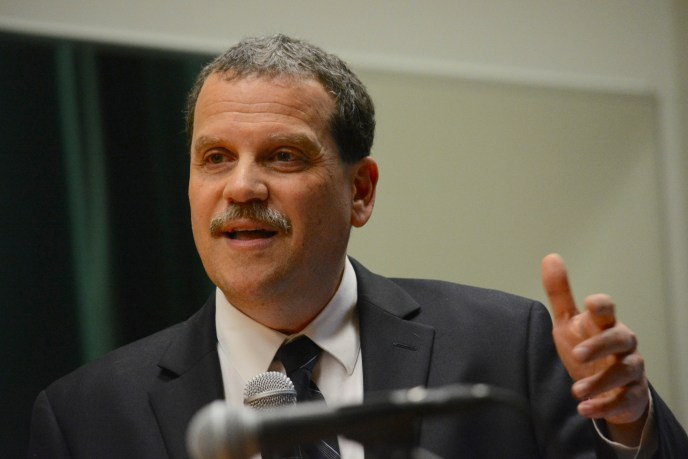The technology director for the Great Neck Public Schools highlighted progress made in boosting the district’s online presence and creating a “21st century classroom” at a board meeting Thursday night, through a combination of a website overhaul, social media and iPads.
The school district’s website first went online on March 1, 1998, according to Marc Epstein, the technology director for the Great Neck Public Schools. And while it has undergone changes over the years, he said, it’s now slated to get a major redesign for its 20th birthday.
“We started with a blank page,” Epstein said.
Among the factors considered in the redesign, which has been the responsibilities of webmasters and a special committee, were aesthetics, simpler navigation, a clean look and consistency.
The schools also sought to create a website that would change appropriately on other digital devices, be ADA compliant and showcase the GNPS brand.
A presentation at the meeting showed a photo carousel in the middle of the page, with a slider of upcoming events for the next five days beneath and quick access links above.
It also features a live social media feed, an option to translate the website into the most spoken languages, and the ability to place emergency announcements atop the page in bold red.
The respective schools websites would use the same template, Epstein said, but they would be able to change some of the colors.
In an interview following the presentation, Epstein said the respective schools are currently migrating the content of their respective websites over to new ones that will hopefully go live sometime in the spring.
“I want it to launch this school year,” Epstein said.
The Great Neck Public Schools first created a Facebook page on March 29, 2017, which currently has nearly 1,700 followers, Epstein said. Since then, the Adult Learning Center, Community Education and South Middle have also embarked on making pages, he said, with the some schools now discussing creating their own.
Additionally, Epstein also highlighted the schools 1:1 iPad initiative, where every student has access to an iPad for class activities like collaborating online, researching, doing homework and using educational apps.
“We blend technology with traditional materials in our instruction,” Epstein said, noting the program is in its seventh year.
Epstein framed it as a means of eliminating a “digital divide,” fulfilling a school mission of developing an innovative curriculum and a way to be environmentally conservative.
Taken together Epstein said the program’s cost was $553,412, but also noted they have also spent $569,701 less on new computers, because “every classroom is a computer lab.”
Epstein also made note of some tips ways they have sought to reduce negative screen time, since “not all screen time is created equal,” through things like workshops, district control settings, blocking the app stores and locking the Safari browser history so parents can see if their child has gone to non-educational sites.
He also recommended using larger text, taking many breaks, setting rules where the devices must be placed in a common room at night to charge and using a night screen mode where the iPad emits a warmer shade of light.
In unrelated business, school trustees said Parkville Elementary School Principal Debra Shalom would be retiring effective Aug. 1, 2018, as would Dr. James Welsch, principal of Great Neck South Middle School.
Trustees also heard concerns from two Beach Road residents, who questioned the need for a student parking lot – as part of the $68.3 million bond issue – in their neighborhood.

